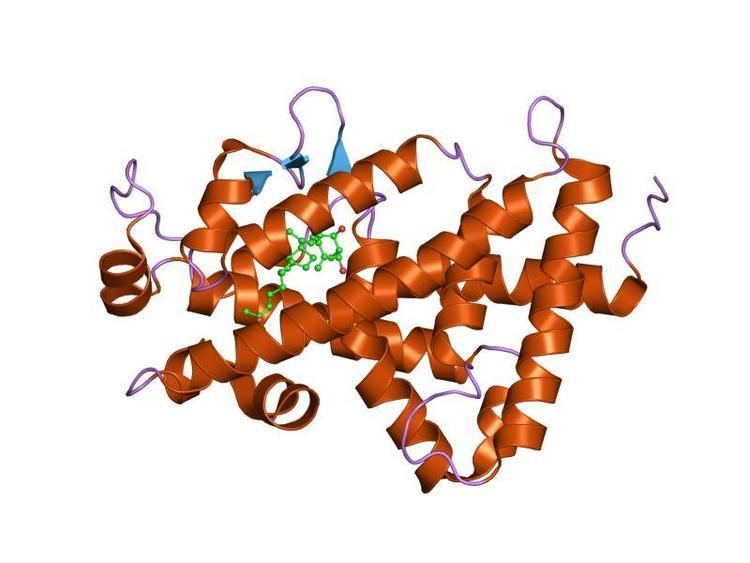Species Human Entrez 7421 | Human Mouse Ensembl ENSG00000111424 | |
 | ||
Aliases VDR, NR1I1, PPP1R163, vitamin D (1,25- dihydroxyvitamin D3) receptor External IDs OMIM: 601769 MGI: 103076 HomoloGene: 37297 GeneCards: VDR | ||
The calcitriol receptor, also known as the vitamin D receptor (VDR) and also known as NR1I1 (nuclear receptor subfamily 1, group I, member 1), is a member of the nuclear receptor family of transcription factors. Upon activation by vitamin D, the VDR forms a heterodimer with the retinoid-X receptor and binds to hormone response elements on DNA resulting in expression or transrepression of specific geneproducts. The VDR not only regulates transcriptional responses but also involved in microRNA-directed post transcriptional mechanisms. In humans, the vitamin D receptor is encoded by the VDR gene.
Contents
Glucocorticoids are known to decrease expression of VDR, which is expressed in most tissues of the body and regulate intestinal transport of calcium, iron and other minerals.
Function
This gene encodes the nuclear hormone receptor for vitamin D3. This receptor also functions as a receptor for the secondary bile acid lithocholic acid. The receptor belongs to the family of trans-acting transcriptional regulatory factors and shows similarity of sequence to the steroid and thyroid hormone receptors.
Downstream targets of this nuclear hormone receptor are involved principally in mineral metabolism though the receptor regulates a variety of other metabolic pathways, such as those involved in the immune response and cancer.
Mutations in this gene are associated with type II vitamin D-resistant rickets. A single nucleotide polymorphism in the initiation codon results in an alternate translation start site three codons downstream. Alternative splicing results in multiple transcript variants encoding the same protein.
The vitamin D receptor plays an important role in regulating the hair cycle. Loss of VDR is associated with hair loss in experimental animals. Experimental studies have shown that the unliganded VDR interacts with regulatory regions in cWnt (wnt signaling pathway) and sonic hedgehog target genes and is required for the induction of these pathways during the postnatal hair cycle. These studies have revealed novel actions of the unliganded VDR in regulating the post-morphogenic hair cycle.
Interactions
Calcitriol receptor has been shown to interact with
Interactive pathway map
Click on genes, proteins and metabolites below to link to respective articles.
